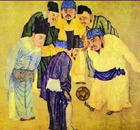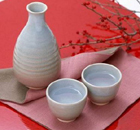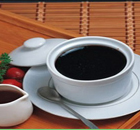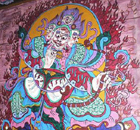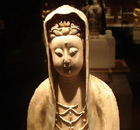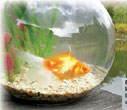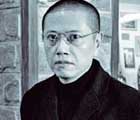Delicacies
The Parisienne of Beijing
By Ye Jun, Donna Mah and Yang Yijun (China Daily)
Updated: 2010-09-26 09:48
 |
Large Medium Small |


Maxim's was one of the first Western restaurants to open in the capital 27 years ago. Ye Jun revisits the stately French lady and finds her as charming as ever.
Beijing

Maxim's de Paris Beijing is probably more well-known than the original restaurant founded in late 19th century Paris - at least as far as the Chinese are concerned. In 1983, all of 27 years ago, the opening of Maxim's in Beijing was an unprecedented sensation. So was the 200 yuan ($30) bill per person, at a time when the monthly income of most Chinese was hardly ever above 50 yuan.
The grand old dame has survived the sea change of the economic reform and withstood the test of time to become an evergreen standing tall in the Beijing cuisine scene.
As the first joint-venture French restaurant, Maxim's provided many an exotic treat, not all of which was culinary. It has played host to many celebrities, including the godfather of Chinese rock 'n' roll Cui Jian, who once played to a full-house of 500 at the restaurant when no one else dared to engage the avant-garde musician as a regular in-house entertainer.
Executive chef Shan Chunwei studied French cooking in 1983, when he followed Pierre Cardin to France to train for three months at the Paris headquarters. Thanks to regular culinary exchanges with its French partners, the restaurant has maintained high standards all along.
The requirements filter down to the simplest details. In the making of soups and sauces, strict quality control in ingredients and the time a particular sauce should be simmered in pot is enforced. Monosodium glutamate is never used.
According to Shan, the restaurant uses only natural ingredients, and never incorporates synthetics, additives or artificial coloring into desserts and cakes.
Maxim's is still serving up the classics. The restaurant's terrine de foie gras prepared with Bordeaux wine sauce melts in the mouth, with a creamy fragrance that lingers long. Beef fillet with black truffle sauce is juicy and savory.
French-style onion soup with toasted garlic bread is delectable, although the presentation is more traditional than modern, as is the crumbed sole where the breadcrumbs are unexpectedly crispy.
Champagne and vintages from different regions in France feature large on Maxim's wine list. Desserts are mainly from the traditional repertoire.
To mark its 27th anniversary, Maxim's is serving a free glass of aperitif wine to each guest right up to Oct 6. There will be also two classic set meals, at 498 and 368 yuan per person, free of the 15-percent surcharge.
Maxim's is a good place for nostalgic get-togethers or romantic occasions. The interior may seem a little dim when you first enter but it is all part of ambiance, especially when golden candlelight reflects on the crystals on the wall.
Expect to pay about 500 yuan for a substantial dinner.

Chocolate: Good for you!
Go ahead and succumb. Chocolate is healthy and will make you feel just fine, says Donna Mah.
Donna Mah
Hong Kong

There has been an explosion of choices for those after quality gourmet chocolates in Hong Kong. Some are freshly made right here, while others are shipped direct from Europe or North America. Hong Kong is a cosmopolitan city and the exposure to premium chocolates has made this so-called "superfood" a popular and sophisticated indulgence.
You've probably heard that chocolate is healthy and makes people happy, but do you know why? Our taste buds tell us they are thrilled with the taste of gourmet chocolate, but what else is happening when we pop these deliciously rich treats into our mouths?
Gourmet chocolate usually contains more cocoa, and more cocoa means that there are more antioxidants. According to research, chocolate contains the natural "love drug" - tryptophan. Tryptophan is used by our brains to create serotonin, which can produce feelings of extreme happiness in people. The chocolate that is good for you is not the high-fat, high-sugar, mass-produced stuff, but the gourmet variety made with at least 70 percent cocoa solids.
For locally made gourmet chocolates, the Vero Lounge at Fenwick Pier in Wanchai is the place to go. Here the panoramic harbor view enhances the chocolate experience with coffee or tea, or perhaps a glass of wine. Vero has intricate chocolate sculptures on display at the lounge and offers chocolate master classes, as well as wine and chocolate pairing events.
At Vero, pastry chef Koo creates decadent chocolate cakes, freshly made muffins, premium dark 70 percent chocolate brownies, oven-baked bread and a signature dark 70 percent chocolate drink. The chocolates here are delicately handcrafted, and you can watch them being made from your seat in the lounge. They are currently offering Premium Chocolate Mooncakes filled with raspberry pats de fruits and chocolate ganache, coated by Vero's signature dark 70 percent chocolate.
Francesca is a recently launched brand of Grand Cru quality chocolate from Switzerland. They offer chocolates for all occasions as well as a learning experience - with a variety of seminars from chocolate for health and beauty to chocolate and wine pairings. Their most popular offerings are the dark collection truffles assortment and the rosewater hearts - perfect for gift giving.
"I have developed a very fine and exclusive range of Swiss chocolate but together with this, I have also created a series of seminars and workshops that engage people and provide a platform to bring like-minded people together to learn from one another and share experiences," says Cornelia Maeder, founder of Francesca. To Maeder, high-quality chocolate is part of a healthier lifestyle.
Famous gourmet chocolate houses Thomas Haas (from Vancouver), Canada, and Jean-Paul Hvin (from Paris), France, have also opened shops in Hong Kong.
Dining in the garden
Xintiandi has drawn the crowds since day one, but one restaurant still stands out, says Yang Yijun.
Yang Yijun
Shanghai

There is no lack of luxurious fine dining restaurants in Shanghai, but few have the location and view like La Finca. Renovated from a traditional shikumen (stone lintel) villa just next to the Taiping Lake, the two-story restaurant is one of the largest and the most well kept in the Xintiandi complex.
La Finca, literally "garden" in Spanish, offers splendid view of the lawns and clear water of the lake. As the summer heat fades, what can be more relaxing than sitting outdoors and tasting delicate gourmet creations in the early autumn breeze?
There is a totally different world when you step into the restaurant. The basic hues are black and gold, giving the dcor a hint of mystique. From the black velvet sofa in the first-floor lounge, you can still see the uneven black bricks, the original wall of the 100-year old villa.
Huge blocks of wood cut from a tree trunk from Indonesia measures 40 cm in diameter and the rustic wood tables and ancient bricks add to the atmosphere.
The second-floor dining room is furnished with black walls lined with gold for an elegant and vivid setting. And the tables out on the balcony offer incomparable views of the lake, with the surrounding shikumen and skyscrapers in the background. It is a pleasant juxtaposition of old and new.
This interior fusion of modern and traditional does little to betray the origins of the restaurant, but a huge Iberia ham on the bar counter announces its Spanish roots.
"We have 18 restaurants in Spain and now we want to test our experience here in our first restaurant in China," says Joseph Gharnati, the restaurant's manager.
And of course, the restaurant is proud of its classic Spanish food such as the tapas, suckling pigs and paella, all prepared according to traditional recipes. Take the tapas, finger food served at happy hours, as an example.
"We can have 1,000 kinds of tapas, depending on how the chef prepares it," Gharnati says. In fact, the tapas menu of La Finca is changed every week so guests can enjoy a constant flow of different mouthwatering traditional Spanish delicacies such as Spanish omelet and creamy Iberia ham croquettes.
Just as it leans towards fusion in decor, the restaurant also focuses on fusion food. In fact, about 50 to 60 percent of the menu is Spanish, while the rest is creative fusion.
Gharnati believes traditional cuisine is not enough for his clientele and La Finca also offers a wide enough selection so every patron can find a favorite dish.
Here, the chef has experimented with unique combinations mixing European traditions with Asian classics with perhaps, an American influence - all with surprising balance. In the upcoming autumn menu, there will be Chinese dumplings stuffed with foie gras together with mushrooms and pineapple and a tuna tartar seasoned with olive and sesame oil, wasabi and soya sauce.
"We always have new food, new flavors and new colors. We'd like to offer the kind of food you have never tried before," Gharnati says.
